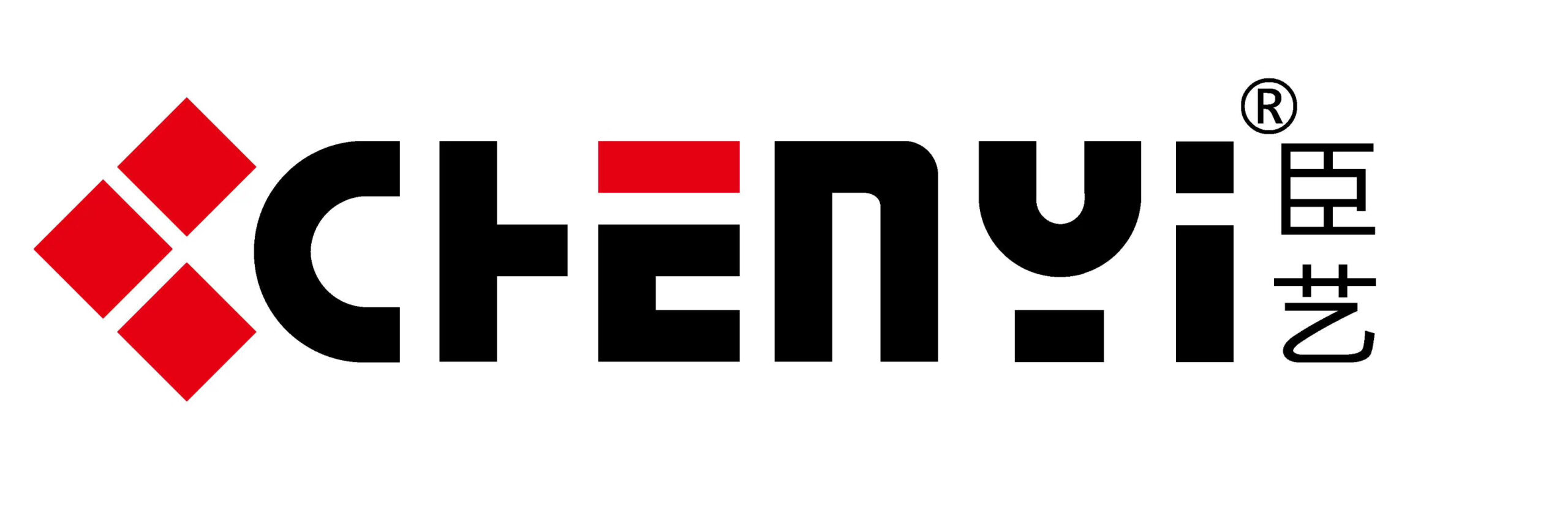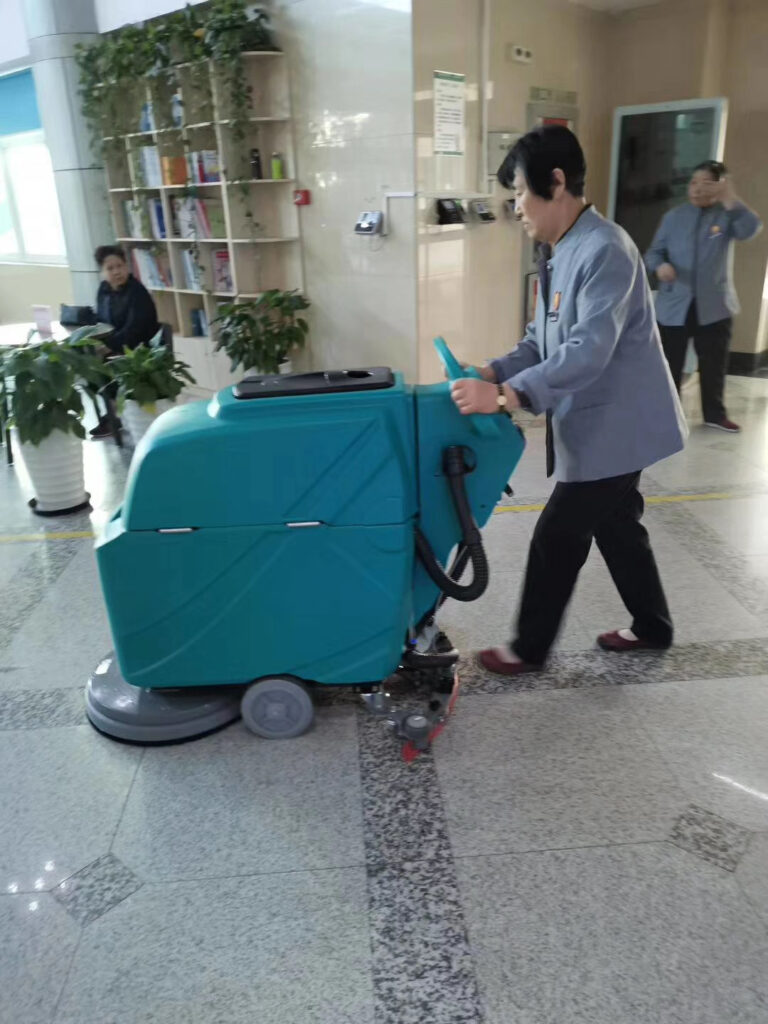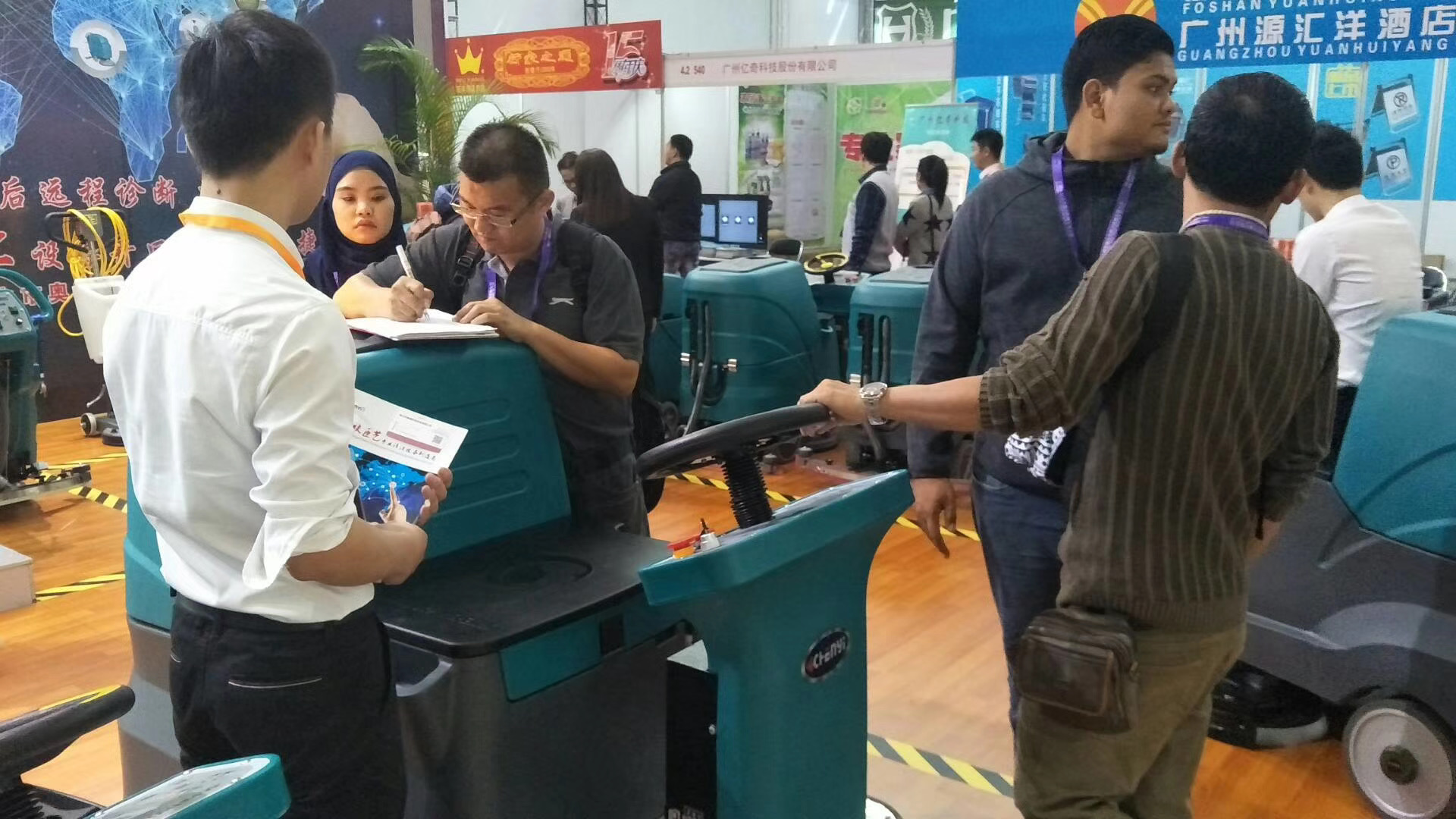What & why to better use your scrubber machine?
If you have hard floors throughout your home such as wood, tile, and vinyl, you are probably thinking about the best way to keep them clean and hygienic without breaking your back with a mop and pail. Floor scrubbers have been used in industrial and commercial contexts for decades. Instead of blades, they have fast-rotating cleaning pads or brush to wash the floor as water or a cleaning agent is released. They have been proven to be a much quicker, more effective, and more hygienic way to keep floors clean.
But why my the automatic floor scrubber is not cleaning the floor well? We hear this too often. So why aren’t the floors getting clean?

Industrial floor cleaning machines are a great investment that can help you save money on janitorial costs long-term. Yet, if your equipment doesn’t last its full lifetime, that investment goes down the drain. Properly cleaning and caring for your janitorial equipment is critical to extending its functionality. Floor scrubber repair gets expensive. Routine maintenance can help you avoid issues altogether before a repair is necessary. Consider these tips to avoid expensive scrubber repairs. Here’s everything you need to know about caring for your industrial floor scrubber.
Preparations before each use
You need to prepare the floor to be cleaned and your equipment before scrubbing
First, preparing the work area:
remove any furniture or other obstructions that can get in the way. Don’t forget to post warning signs to make sure that employees and customers are aware of the maintenance work going on. Dusting the area can help as well. This will remove anything that may damage your machine, such as trash collecting beneath the squeegee.
Pls kindly note if you’re cleaning a space that frequently collects small pieces of debris, like a warehouse, be sure to choose a scrubber that can handle it.
Second, prepare your equipment:
Be sure to follow instructions – Every floor scrubber model comes with a set of instructions on the right amount of chemicals to be used. A neutral cleaning solution should be used on finished (waxed) floors and marble floors. A heavy-duty de-greaser can be used in industrial plants and warehouses with concrete floors.
Third, check the charge status of your battery.

If applicable except for some upright floor scrubbers, floor scrubbers run on batteries. There are four common types of batteries: wet flooded, gel, AGM, or lithium. Each type of battery has its own specific maintenance requirements, regardless of the type of battery.
Make sure the battery of your scrubber is fully charged before you start working. This means you start the job with your machine at its maximum energy level. It sets you up to perform at your best. If your battery isn’t fully charged? Reload it.
Most auto floor scrubbers can run nonstop for 2 to 4 hours on a full charge, even 5-6 hours on ECO mode . You may worry that it’s not enough time to cover the area, but if you prepare the floor, you will be able to clean about 50,000 to 70,000 square feet on a full charge with a single charge. Generally, it may take 6 to 10 hours to fully charge again for the next usage.
Fourth, choose the right brush or pad’s type & pressure & operator speed.
Brushes come in a large assortment of grit types to deal with different levels of build-up. Polypropylene, nylon, and tynex grit brushes are some common types.
Pads are also available in a large range and follow an industry-wide color code classification to distinguish their abrasiveness. Pads range from fine for delicate surfaces to very coarse for industrial cleaning and stripping.

Pads pressure
Make sure the machine you are using has pressure adjustments. Some scrubbers may only have 1 setting with a predetermined amount of weight on the brush. More pressure means better cleaning but be careful. Too much pressure may damage the floor. The right pressure combined with the right pad or brush may make all the difference. More pressure also means more amp draw and drain on the batteries.
Pads or Brushes
Make sure you are using the correct color and type of pad or brush recommended for your floor surface. You may need to use a more or less aggressive pad to achieve the results you want.Choose the right pad or brush that will suit your floor and mount this on the bottom portion of the deck. You would want to use a less aggressive pad, such as a white or red pad on high gloss floors, which would include finished (waxed) floors and marble floors. An aggressive pad such as brown or black would be used on concrete floors. By rule of thumb, pads are for smooth surfaces and brushes for rougher, uneven floors with grout lines to clean.
Check the condition of the scrubbing brush or pad.
Also, check to ensure ou are changing the pads and brush frequently.
Match the propriate brush to your floor surface. Too aggressive and you can damage the floor. Too weak and your may does not remove all the dirt.
Worn pads will not clean as well and may allow the pad driver bristles to poke through and damage the floor. The same goes if you are using brushes. If your scrubbing brush or pad is worn, you’re not going to end up with the clean and shiny floors that you’re aiming for. But you can make the job easier by checking the wear on your scrubbing brush or pad before you begin. If they aren’t in good condition, replace them.
Fifth, check the condition of your squeegee blade and scrubbing head skirt.

Railway Station Floor Cleaning
You need your squeegee blade to be robust to fulfill its duties. A worn-out squeegee blade makes cleaning the floors harder than it needs to be. The good news Squeegee blades are always wiping in the same direction, so if yours is worn out, you can easily turn it around to get more life out of it. This means you don’t have to buy a new one every time.
If your scrubbing head skirt is damaged, there’s a good chance you’ll run into trouble on the job.
Sixth, connect all hoses – Also make sure that all of the hoses are connected to the device.
Seventh, Check for leaks/damages – Get any leaks/damages repaired before you use your floor scrubber.
Eighth, fill in the solution tank with suitable clean water & cleaning chemicals and make sure the recovery tank is empty.

There are two separate tanks on your auto floor scrubber; one for cleaning solution and one to collect the dirty solution that is removed from the floor.
The quicker you can get the job done properly, the better. So, don’t start cleaning while there is still water in the recovery tank of your industrial floor scrubber. Leftover water means your tank will fill up much faster and you’ll soon have to stop work to empty it. Save time on the job by making sure it’s empty before you begin.
Also, don’t forget to fill your solution tank with clean water and suitable cleaning chemicals before each use.
Cleaning chemicals are needed to clean. They emulsify the soil and hold the dirt in suspension until the squeegee can wipe the floor and remove the dirty water. Without chemical, the floor may streak because the dirt settles too quickly back to the floor. This happens often when the user consistently ses only water to clean. The squeegee will then drag the dirt and smear the floor rather than remove he dirt. In most cases some type of cleaning chemical must be used. Check the ingredients in the chemical you are using. Some neutral cleaners contain solvents that can damage finish and coatings.
Disinfectants can also damage and dull the floor. Make sure you are using the appropriate chemical in the right dilution for the floor surface you are trying to clean. Highly finished floors will require a chemical to help increase the shine. Never underestimate the use of a clean water rinse on a floor with a glossy finish. Sometimes, flooding the floor with plain water will restore the shine that has been dulled over time by the residue left behind by disinfectants and cleaners. Dirty, greasy, grimy floors may require a heavier cleaner with a higher ph level. Oily, greasy floors will need a strong degreaser that cleans but doesn’t dull or streak.
Finally, If all well done above issue, then assess scrubbers brushes, pads, squeegee blade, and scrubbing head skirt. Then all set to go to brush your floor .











